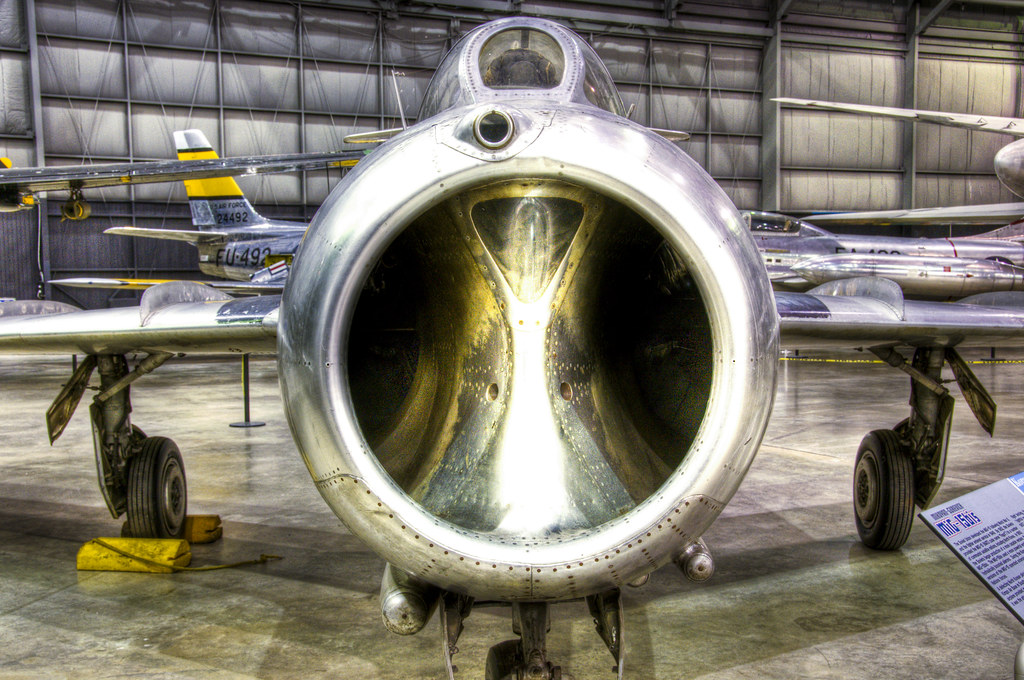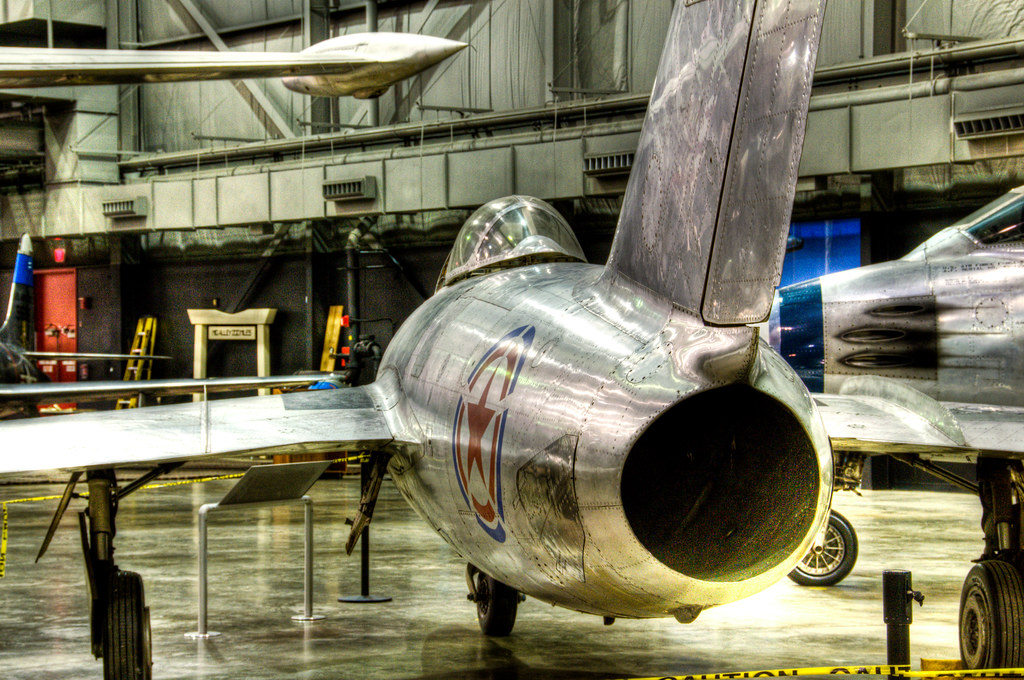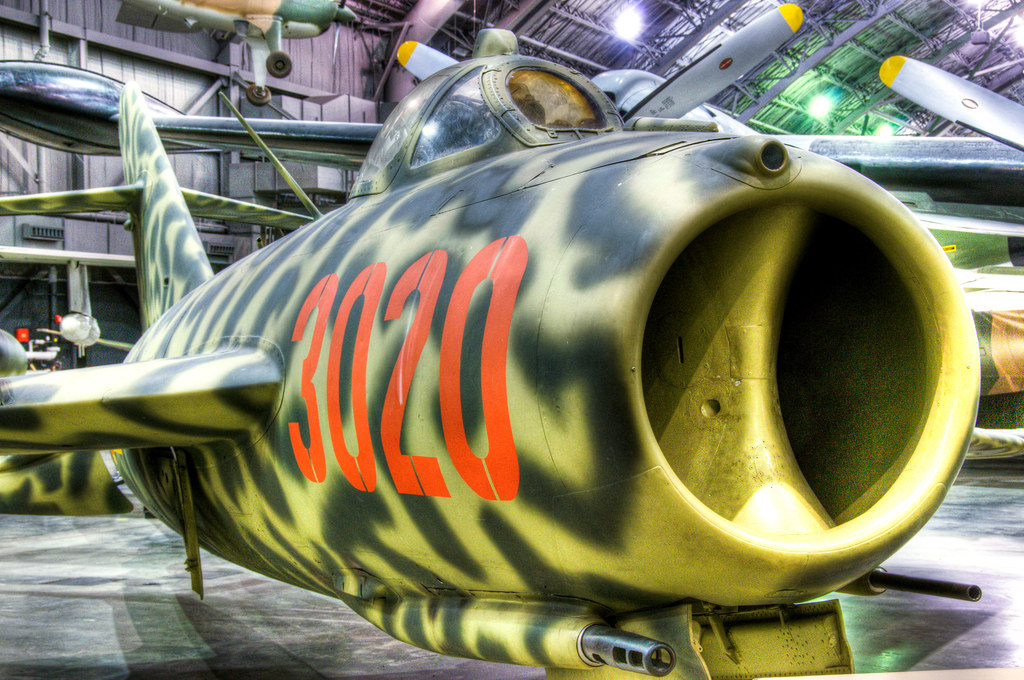 The MiG company was founded as an independent design department in December 1939 by Artem Mikoyan, a young aviation designer who had grown up in a remote Asian village. Mikoyan had worked as a mechanic in the 1920s before graduating from a military academy in 1937. He worked briefly in the late 1930s for Nikolai Polikarpov, a famous Soviet aviation designer. When Mikoyan began his independent work in 1939, he joined forces with Mikhail Gurevich, an accomplished aeronautical engineer who had recently visited the United States to negotiate a license to build a Soviet version of the Douglas DC-3. Mikoyan and Gurevich's first design was the I-200 high altitude interceptor that eventually bore the name MiG-1, standing for the first letters of each of their names and the "i" in the middle for the Russian word for "and." Using engine technology captured from the Germans after the war, Mikoyan and Gurevich produced the first Soviet jet fighter, the MiG-9, which flew for the first time on April 24, 1946. The MiG design bureau was very productive during the Cold War and produced some of the Soviet Union's most famous high-speed jet fighters.
The MiG company was founded as an independent design department in December 1939 by Artem Mikoyan, a young aviation designer who had grown up in a remote Asian village. Mikoyan had worked as a mechanic in the 1920s before graduating from a military academy in 1937. He worked briefly in the late 1930s for Nikolai Polikarpov, a famous Soviet aviation designer. When Mikoyan began his independent work in 1939, he joined forces with Mikhail Gurevich, an accomplished aeronautical engineer who had recently visited the United States to negotiate a license to build a Soviet version of the Douglas DC-3. Mikoyan and Gurevich's first design was the I-200 high altitude interceptor that eventually bore the name MiG-1, standing for the first letters of each of their names and the "i" in the middle for the Russian word for "and." Using engine technology captured from the Germans after the war, Mikoyan and Gurevich produced the first Soviet jet fighter, the MiG-9, which flew for the first time on April 24, 1946. The MiG design bureau was very productive during the Cold War and produced some of the Soviet Union's most famous high-speed jet fighters.
Mikoyan-Gurevich MiG-15bis ("bis" meaning "second")
The Mikoyan-Gurevich MiG-15 was a jet fighter developed for the USSR by Artem Mikoyan and Mikhail Gurevich. The MiG-15 was one of the first successful swept-wing jet fighters, and it achieved fame in the skies over Korea, where early in the war, it outclassed all straight-winged enemy fighters in daylight. The MiG-15 also served as the starting point for development of the more advanced MiG-17 which was still an effective threat to supersonic American fighters over North Vietnam in the 1960s. The MiG-15 is believed to have been one of the most widely produced jet aircraft ever made, with over 12,000 built. Licensed foreign production perhaps raised the total to over 18,000. The MiG-15 is often mentioned along with the F-86 Sabre in lists of the best fighter aircraft of the Korean War and in comparison with fighters of other eras.
Eager to obtain an intact MiG for testing, the United States offered a reward of US$100,000 and political asylum to any pilot who would defect with his airplane. Eventually, the North Korean pilot Lieutenant No Kum-Sok, who claimed to be unaware of the reward, landed at Kimpo Air Base on 21 September 1953, allowing the first detailed evaluation of the aircraft. This MiG-15 was minutely inspected and was test flown by several test pilots including Chuck Yeager. Yeager reported in his autobiography the MiG-15 had dangerous handling faults and claimed that during a visit to the USSR, Soviet pilots were incredulous he had dived in it, this supposedly being very hazardous. When this story got back to the Soviet pilots Yeager claimed to have talked to, they angrily denounced it. In fact, although the MiG-15 did have some handling quirks and could, in principle, exceed flight limits in a dive, its airbrakes opened automatically at the red line limit, preventing it from going out of control.

Mikoyan-Gurevich MiG-17F
Vietnam War MiG-17s were designed to intercept straight and level flying enemy bombers, not for air to air combat (Dog-fighting) with other fighters. This subsonic (.93 Mach) fighter was effective against slower (.6-.8 Mach), heavily loaded US fighter-bombers, as well as the mainstay American strategic bombers during the MiG-17's development cycle (such as the B-50 or B-36, which were both still powered by piston engines). Even if the target had sufficient warning and time to shed weight and drag by dropping external ordnance and accelerate to supersonic escape speeds, doing so would have inherently forced the enemy aircraft to abort its bombing mission. By the time the USAF introduced strategic bombers capable of cruising at supersonic speeds such as the B-58 Hustler and FB-111, however, the MiG-17 became obsolete in PVO service and was supplanted by supersonic interceptors such as the MiG-21 and MiG-23.
MiG-17s were not available for the Korean War, but saw combat for the first time over the Straits of Taiwan when PRC (Communist China) MiG-17s clashed with ROC (Nationalist China) F-86 Sabres in 1958. MiG-17s were sold and/or imported to many Middle Eastern countries and saw action in nearly all of the Arab-Israeli conflicts starting when 12 of them served with the Egyptian Air Force during the Suez Crisis of 1956, plus hundreds more served, and were mostly destroyed, in the Egyptian and Syrian Air Forces during the Six-Day War of 1967 as well as the War of Attrition, the 1973 Yom Kippur War, and the 1982 Israeli Invasion of Lebanon. At least 24 of them served with the Nigerian Air Force and were flown by a mixed group of local Nigerian and mercenary pilots from East Germany, Soviet Union, South Africa, the United Kingdom, and Australia during the 1967-70 Nigerian Civil War. Four were hurriedly supplied by the USSR to Sri Lanka during the 1971 insurgency and were used for bombing and ground attack in that conflict. Four North Korean Mig-17 aircraft were involved in the EC-121 shootdown incident, where they manged to shoot down an American EC-121 Warning Star. Similarly in 1958, a USAF C-130 was shot down by four MiG-17 fighters when it flew into Soviet airspace near Yerevan, Armenia while on a Sun Valley SIGINT mission, with all 17 crew killed. Twenty countries flew MiG-17s. The MiG-17 became a standard fighter in all Warsaw Pact countries in the late 1950s and early 1960s. They were also bought by many other countries, mainly in Africa and Asia, that were neutrally aligned or allied with the USSR. The MiG-17 still flies today in the air forces of Angola, Mali, Mozambique, North Korea, Sudan and Tanzania.

No comments:
Post a Comment